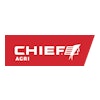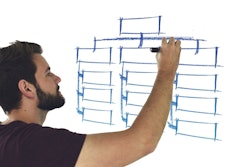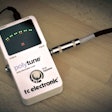
I recently reconnected with a colleague I met at an industry event last year. In the time that had passed, she started a new role with a new organization and I wanted to hear all about it — what led up to it, what she’s learned, and how her transition was going (remember, I’m an HR person, so this is the stuff I get excited to learn about!).
As we talked, she admitted that while there were challenges in her previous role that she didn’t enjoy, she wasn’t actually looking to make a job change at all. In her words, “making change is hard.” Another organization had caught her attention in the years prior, but she wasn’t interested. When they reached out again, though, she decided to just take theinformational interviewand learn more about the company and the role. Again, NOT with the intent to make the change. Her intent was to get more information, see that most organizations are similar, and stay put where she was (and where the known was easier than the unknown of a new role).
As she began to go into more detail with me about her “informational interview,” her tone quickened and the enthusiasm in her voice changed. This interview ended up being more than two and a half hours with multiple team members at the company. Their questions were situational based questions (the ones that start with “tell me about a time when...” or “give me an example of...”), and the questions centered around the company’s value of servant leadership.
Then she said this: “It made me see that they weren’t hiring justanyone, that a new hire really needed to fit.”
这个过程本身,使用它的人,帮助ed her feel what they wanted her to feel — that her experiences were valued and appreciated. In doing this, it also connected her to the team members involved in the process, and with the organization. While she went into the day without any intent of leaving her current role, the process she went through provided her the confidence and insight she needed to make the huge step of leaving an employer and going elsewhere.
Her last comment in our discussion? “I don’t know what took me so long.”
How’s that for a meaningful recruiting process?
Making it easy to take the next step requires clarity
As I reflect back on this example and think about the steps that the hiring company did well, providing clarity and safety are the first two that come to mind. Here are a few that stood out to me:
- Longer term relationship provided safety.This wasn’t a cold-call interview. The leaders here knew about this candidate, continued to stay in touch with her, and brought her in to learn more when it seemed like a good time for both parties.
- Keeping it all aboutthe values. The interview questions asked all reinforced the values and behaviors that were expected of team members every day in the business. My colleague even shared that it became very evident during the discussions that this wasnormalfor this organization — that the expectations and behaviors are clear, and everyone is held to the same standard.
What can you do today?
I’m not promising any of this to be an easy fix, or thathiring rightis the result of a process you can slap together in a day. The hardest part of this is giving yourself permission to pause for a moment and think about what kind of experience you want to create for a prospective candidate.
What are some things you can do to make a candidate — for any role in your business — say they felt valued and appreciated during their interview process?
- Start to build relationshipsnowfor roles that aren’t even open. You’re likely already doing this today! Engage your current team members (especially the ones you want to duplicate!), and ask them who they would recommend to your organization. Clarify with them that even if you don’t have a position today, who do they know that you should start to connect with? If they can help make an introduction, an informational interview — or coffee, or breakfast — can go a long way just to start building your pipeline of potential future talent.
- Get your interviewers ready.Who participates in your interviews today? Just you? Who else is wanting to grow or develop on your team that could play a role in interviewing? Getting others involved in the process allows you to ask more questions, get more information, new perspectives, and helps you reduce bias in your process. If you haven’t been through interview training to know what to say (and not) in an interview, we can help.
- Have your interview questions dialed in and ready.If you’re running around to find questions for candidates in the next five minutes, I’m talking to you. Take sixty minutes this week to think through SPECIFICALLY the behaviors and values important to your business. Write out a fewbehavior-based questions(the ones that start with “tell me about a time when...”) for these behaviors and values, and share your template with your interview team. Having consistent questions for each candidate improves your ability to assess candidates against one another.
Think it doesn’t apply to you?
Some may argue that this process works well for professional level roles, but doesn’t make sense for more entry-level or service roles. My challenge back to leaders is that entry-level and service roles are some of the most customer-facing roles in the business. Our team members making deliveries, answering phones or loading vehicles represent our brand and our business in each of their interactions.

My question for you: how valued and appreciated do candidates feel during your hiring process today?
We welcome your thoughts and questions. To have your question considered for futureAnswering the Callblogs, please contact Erin directly aterin@peoplesparkconsulting.com.













